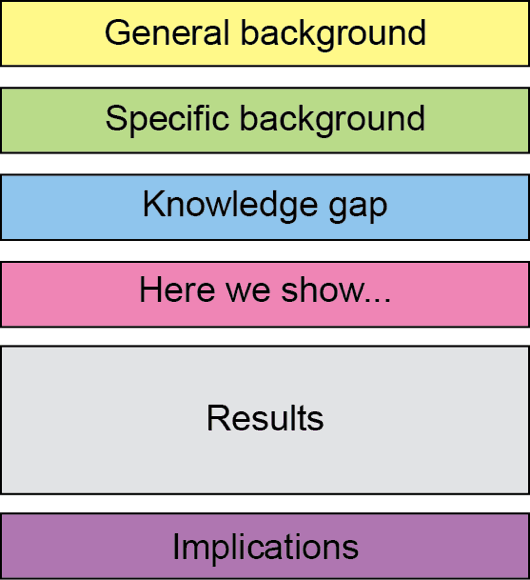When to Write the Abstract
- Results
- Discussion
- Introduction
- Abstract
Writing an abstract can be difficult because you are tasked with condensing tons of work into such a small amount of space. To make things easier, write your abstract last. Read through your entire paper and distill each section down to its main points. Sometimes it can be helpful to answer this question through a subtractive process. For example, if you are trying to distill down your results, simply list all your findings and then go through that list and start crossing off or consolidating each finding until you are left with a only the most crucial results.
Purpose
Your title and abstract are the primary medium through which interested readers will find your work amidst the deluge of scientific publications, posters, or conference talks. When a fellow scientist happens upon your abstract they will quickly skim it to determine if it is worth their time to dive into the main body of the paper. The main purpose of an abstract, therefore, is to contextualize and describe your work in a concise and easily-understood manner. This will ensure that your scientific work is found and read by your intended audience.
Abstract Formula
Clarity is achieved by providing information in a predictable order: successful abstracts therefore are composed of 6 ordered components which are referred to as the “abstract formula”.

General and Specific Background (~1 sentence each). Introduce the area of science that you will be speaking about and the state of knowledge in that area. Start broad in the general background, then narrow in on the relevant topic that will be pursued in the paper. If you use jargon, be sure to very briefly define it.
Knowledge Gap (~1 sentence). Now that you’ve stated what is already known, state what is not known. What specific question is your work attempting to answer?
“Here we show…” (~1 sentence). State your general experimental approach and the answer to the question which you just posed in the “Knowledge Gap” section.
Experimental Approach & Results (~1-3 sentences). Provide a high-level description of your most important methods and results. How did you get to the conclusion that you stated in the “Here we show…” section?
Implications (~1 sentence). Describe how your findings influence our understanding of the relevant field and/or their implications for future studies.
This content was adapted from from an article originally created by the MIT Biological Engineering Communication Lab.
